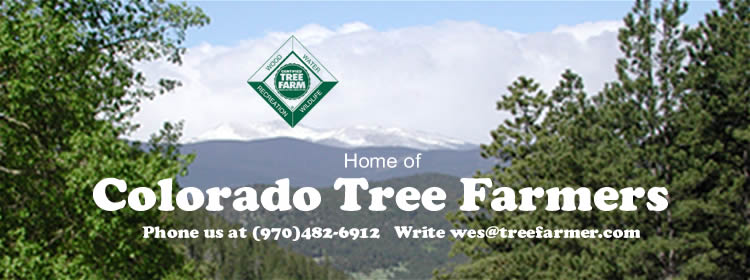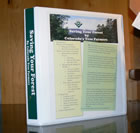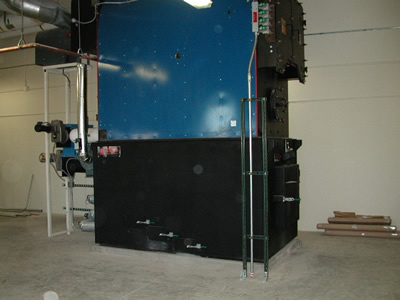|
Biomass Heating Tour The Colorado State Tree Farm Committee and local Tree Farmers toured the Boulder Parks and Open Space biomass heating facility in Longmont on 12.07.06. The facility heats 95,000 square feet of offices and workshops with wood chips harvested from Boulder County's 20,000 forested acres of open space. The facility is an excellent example of how sustainable forestry practices and fire mitigation efforts can be combined with efforts to reduce heating costs through the use of a local and abundant alternative fuel in order to create a win-win situation for Colorado residents. Here is how it works: __________________________________ The process starts by thinning the forest on Boulder's open space lands. Thinning, of course, improves forest health by reducing overcrowding and removing diseased and insect infested trees. It also mitigates the damage caused by wildfire by keeping fires on the ground instead of rising to the crowns of trees where it can grow larger and spread faster. Boulder uses a whole tree chipper that reduces labor costs and speeds the thinning process.
Chips are collected in specially built containers
in order to keep them free of dirt, rocks and other debris that can
damage the heating system. Clean, high quality chips
The containers can sit on site until they can be filled
with chips.
At the heating facility, chips are dumped into a storage bin. The storage bin is designed to hold the fuel and convey it into the fuel handling system as needed. One side of the bin is constructed of reinforced steel. The walls of the storage room form the other three sides of the bin. At the bottom of the storage bin is a traveling auger.
The auger moves chips from the storage bin to the
fiel system.
The Messersmith Combustion System consists of a refractory-lined
steel combustion chamber, cast iron grates designed especially for
particle wood fuels, combustion air blowers,
The control system is made up of the motors that power
the augers, belt conveyors,
The biomass heating system heats water that is circulated Boulder County is somewhat unique in that it has 20,000 acres of forested open space which provides the raw material from which to produce it's biomass fuel. However, biomass heating facilities are now being planned and built throughout Colorado. Many of these facilities will have to rely on forestry businesses, state and federal forests and private land owners to provide the fuel that they will need. If fossil fuel prices remain high or grow even high, more and more county governments, school systems, and private businesses will be considering woody biomass as an alternative fuel. Tree Farmers are already creating more than enough raw material in the form of slash from their forest health and wildfire mitigation efforts to supply this fuel. What is needed is an organized infrastructure to process the raw material and deliver it to the end users. The Colorado State Tree Farm Committee and local Tree Farm groups throughout the state are trying to organize such an infrastructure. If you are interested in taking part in this effort, please contact Wes Rutt at stumpmaker@aol.com
|












